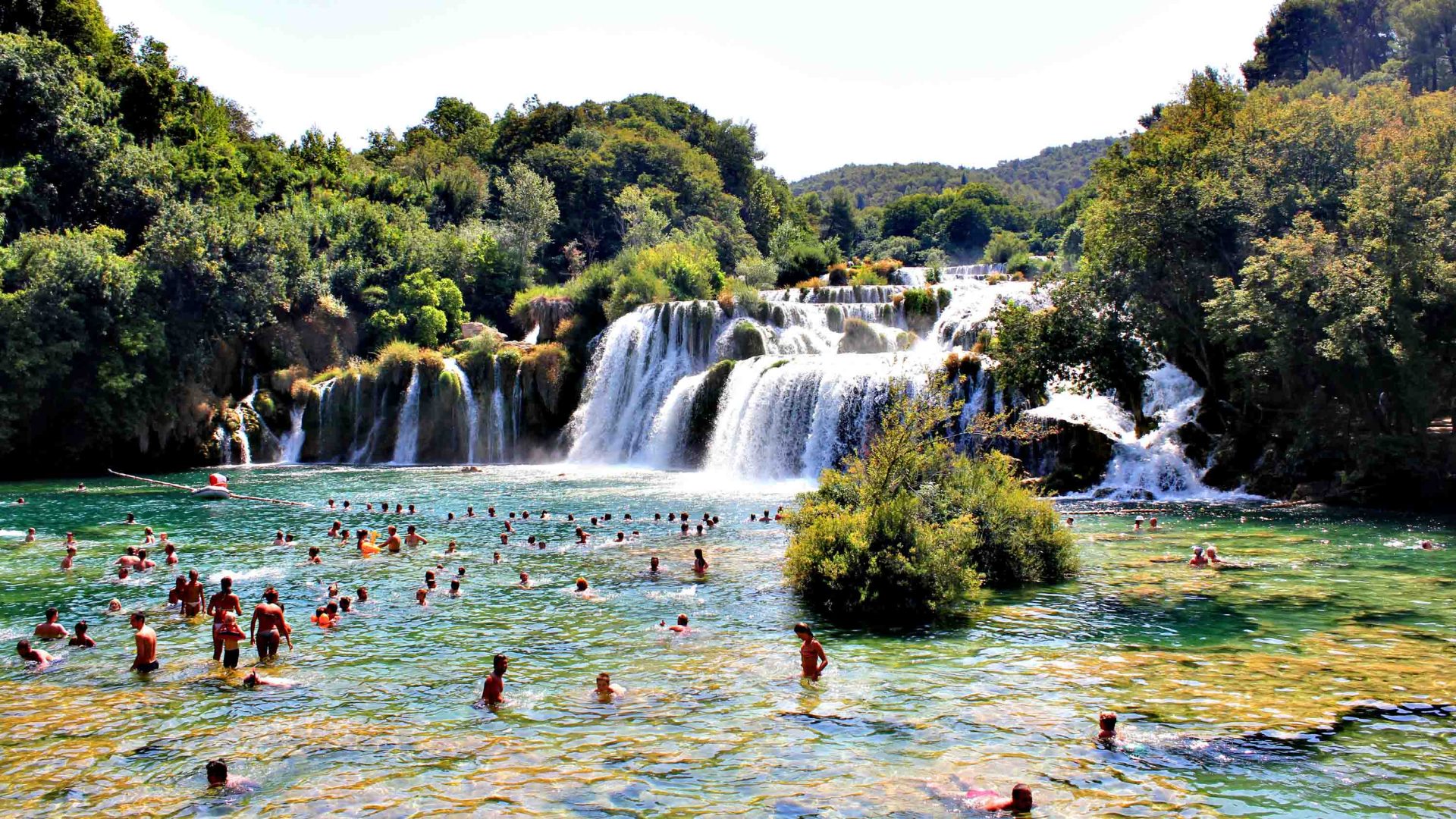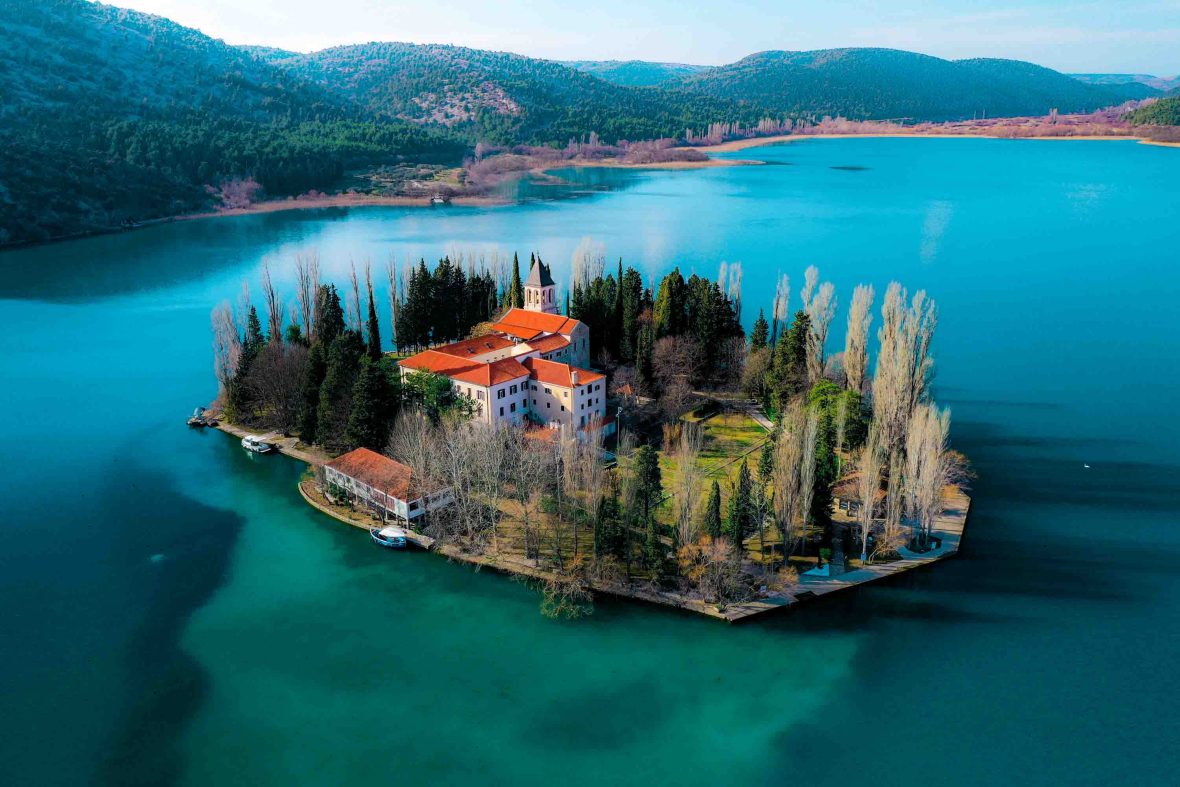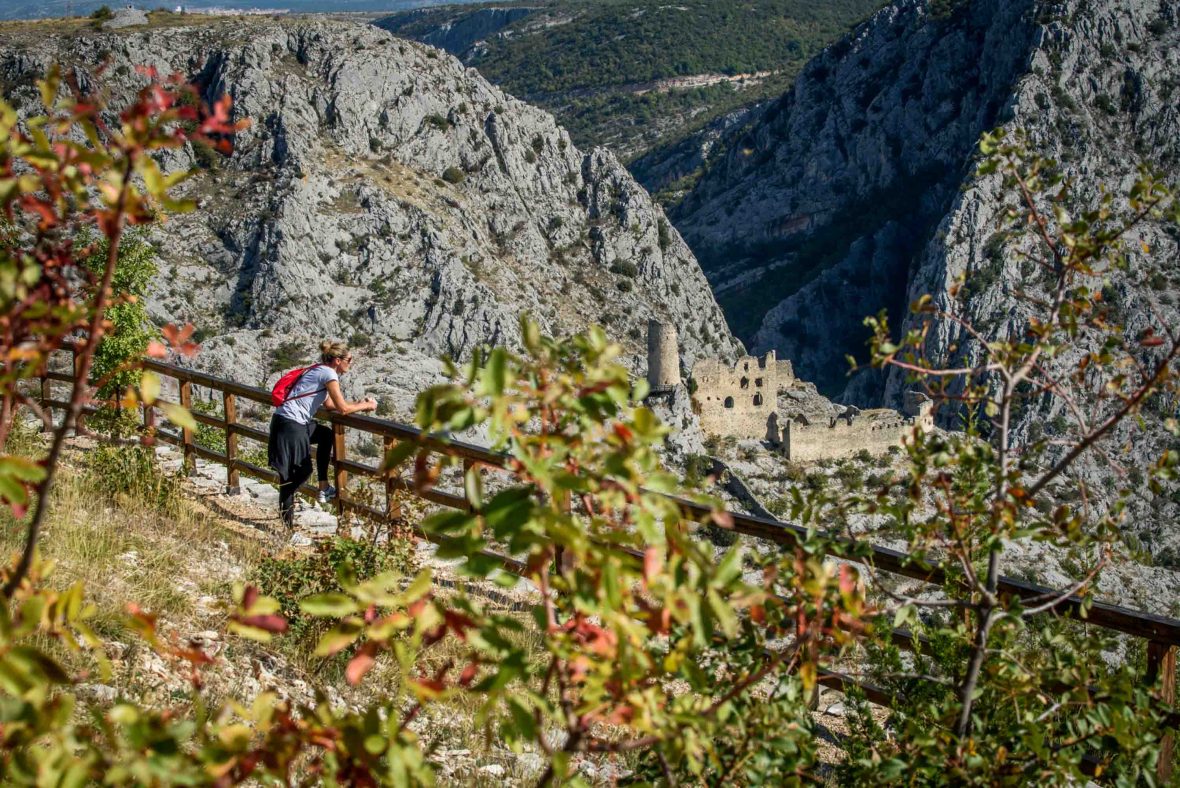
When Croatia’s Krka National Park put measures in place to reduce the impact of tourism, not everyone was happy. As the park hit one million visitors in 2022, Chau-Jean Lin explores the issues at play among residents, tourists and park authorities.


When Croatia’s Krka National Park put measures in place to reduce the impact of tourism, not everyone was happy. As the park hit one million visitors in 2022, Chau-Jean Lin explores the issues at play among residents, tourists and park authorities.
Chau-Jean Lin was one of four mentees who participated in Intrepid’s first Diversifying Travel Media press trip in September 2023 alongside three fellow mentees/aspiring travel journalists and four mentors/established travel writers and editors.
The water is as clear as a polished diamond. A staccato of crickets and cameras accent the seven rumbling waterfalls. We cross a boardwalk with no handrails—like ants traversing across a thin branch on an oak tree.
“Feeling the cool water when the temperature is around 30 degrees is phenomenal,” our guide, Pavle Ljubic, says, recalling previous swims here. It’s September yet it feels like July. I scan for swimmers among the chatter of tourists. There are none.
The oasis-like Krka National Park sits upon 109 square kilometers (42 square miles) in the foothills of the Dinaric Alps, about an hour’s drive from Split, Croatia, and 30 minutes from Šibenik on the country’s Dalmatian coast. Home to over 400 types of flora and endemic wildlife, it’s where 19th-century water mills, Europe’s second-oldest hydroelectric plant, and a Gothic-Romanesque Franciscan monastery sit under canopies of conifers. Just over 4,000 locals live in the nearby towns of Lozovac and Skradin on a barren, near-deserted landscape. But Krka is one of the most visited parks in Croatia, with a cap of 10,000 visitors per day.

It’s my third day in Croatia. We arrive by minibus at the Lozovac entrance where a hiking path, a map, and the sound of gushing water greet us. I cross a bridge to reach Krka’s most visited and longest waterfall, Skradinski Buk. Once a popular locale for swimming, a ban was enforced there on 1 January 2021. According to Pavle, “The hundreds of people swimming before the ban definitely took away from its natural beauty.”
Despite an undercurrent of dissatisfaction from locals with current policies, improving community relations and relieving pressure on the area’s ecosystem seem to be at the heart of the park management’s strategy.
On the trail, bright blue signposts tell us about the park’s wildlife, but none explain why swimming endangers its ecosystem. Swimmers in the past had unknowingly eroded the soils, creating clouds of run-off. The pollution produced suffocated the mosses, algae, and plants necessary for the growth of travertine—the limestone that forms new waterfalls. The park’s management had invested in preserving its history along the trails—from displaying ancient limestone tools in a small museum to installing a large turbine to symbolize the world’s second hydroelectric power system. But until the ban, it hadn’t taken steps to preserve the future of the limestone itself.
With the swimming ban in place, not everyone was pleased. Although the measures were also implemented to prevent accidental deaths, residents of Lozaovac protested. Since then, Katarina Aleksić of the local tourist board indicated that residents are able to swim in designated areas around the park.
Past the bridge, I spot the only swimmers around—on a postcard. We’re at the park’s former public swimming hole, where an out-of-place bubble tea hut, souvenir kiosk and ice cream stall stand on the water’s edge. Clothes were once washed here, and residents bathed alongside each other. I purchase the postcard and speak to the shopkeeper about the swimming ban. There is an undertone of distrust.
As we wait for the others in the group, Pavle hands me a sliver of candied orange peel. A local seller on the path meticulously hand-dried them. As I take a bite, Pavle explains the complex relationship between the locals and park management. He notes that many residents own property on park grounds, but “they have difficulty maintaining those properties due to park restrictions.” It’s no wonder why locals objected to the swimming ban.
Despite an undercurrent of dissatisfaction from locals with current policies, improving community relations and relieving pressure on the area’s ecosystem seems to be at the heart of the park management’s strategy. A partnership with the region’s first digital nomad office, Trokut Šibenik, a daily cap on visitors and reduced off-peak entry fees create a more sustainable model of tourism for the park.
Nella Slavica, director of Krka National Park, notes that the partnership with Trokut Šibenik allows short-term residents to experience Šibenik-Knin County’s growing technology sector and the natural heritage that the region offers. As of last summer, 40 remote workers had visited Trokut, but it’s unclear if the participants had taken advantage of the free educational programs in the park or had joined the Krka Club.
The answer to preserving the park’s ecosystem and heritage may just lie beyond local authorities.
As we reach the final stretch of the boardwalk, the clock strikes twelve. Timed entry into the park creates congestion on the trail. A group of students entered, while the bus tour groups were leaving. With park restrictions in place, “a lot of groups go at similar times, making it a hassle. People fear losing their chance to visit,” Pavle tells me. I imagine how residents must feel about the increasing number of crowds in their backyards.

Given that tourism currently contributes to at least 18.5 percent of the country’s gross domestic product and has been on the rise since the COVID-19 pandemic, the issues facing the Park, residents and tourists are likely to become more complex. Actions from other stakeholders in the travel industry, such as Croatia Airlines’ announcement to continue its flights from London to Split through the winter last year, maybe the solution to mitigate the issues of peak-season tourism. The answer to preserving the park’s ecosystem and heritage may just lie beyond local authorities.
Just before the end of the path, a deluge of water has broken the boardwalk into planks. Free-flowing water cascades down the broken stairs, creating a manmade, eighth waterfall. Looking down at the pooling water, I note that it’s notably sharp, calm and crystal clear.
**
This trip was based on Intrepid’s Croatia: Sibenik & the Kornati Islands itinerary. Find out more about it here and find out more about Croatia through Explore Croatia‘s (the national tourist board) mobile app.
***
Adventure.com strives to be a low-emissions publication, and we are working to reduce our carbon emissions where possible. Emissions generated by the movements of our staff and contributors are carbon offset through our parent company, Intrepid. You can visit our sustainability page and read our Contributor Impact Guidelines for more information. While we take our commitment to people and planet seriously, we acknowledge that we still have plenty of work to do, and we welcome all feedback and suggestions from our readers. You can contact us anytime at hello@adventure.com. Please allow up to one week for a response.

Chau-Jean Lin is a multilingual, Taiwanese-American freelance writer, lecturer, and entrepreneur based in London. She is a former language editor for Astronomy and Astrophysics, and a scientist who previously traveled the world in a lab coat. When not working, she can usually be found on her family’s tea farm.








Can't find what you're looking for? Try using these tags: